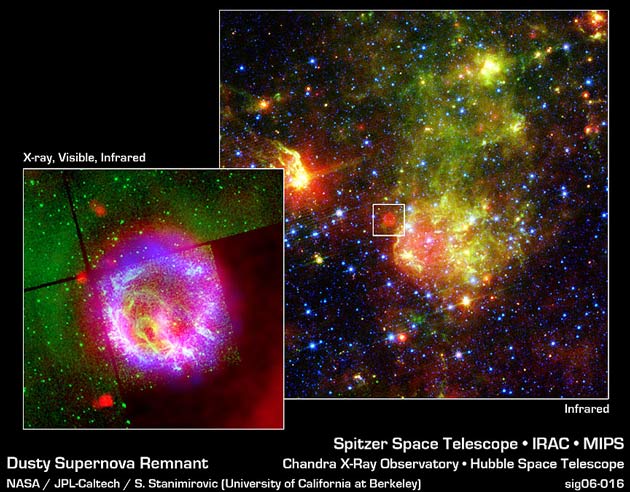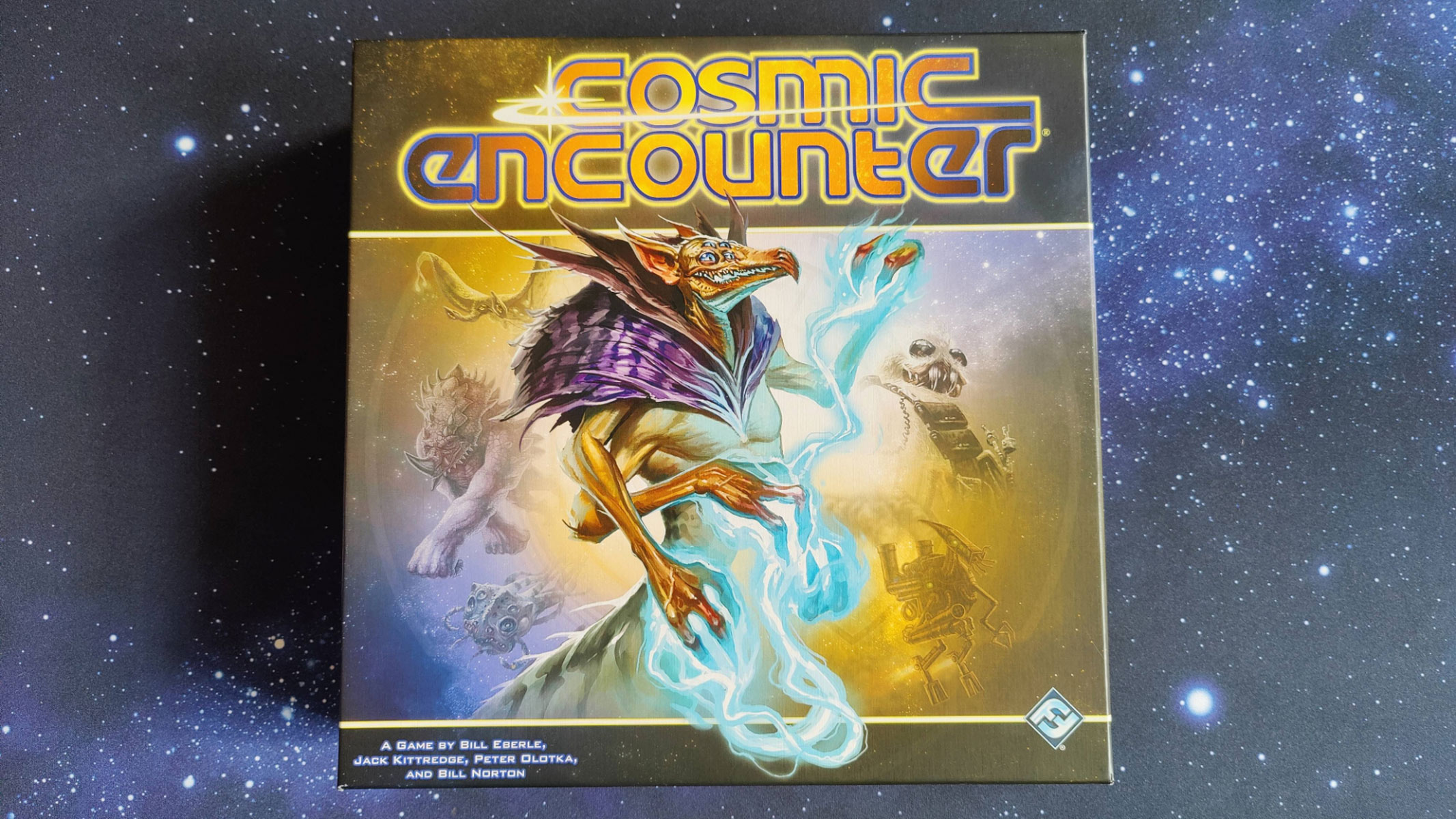Explosive Debate: Supernova Dust Lost and Found

Two teams of astronomers observing the aftermaths of supernova explosions have announced findings that add fresh fuel to a dusty debate.
Supernovas have long been believed to be the universe's prime "dust factories," cataclysmic star deaths that spewed forth the stardust from which subsequent generations of stars, planets, and people were eventually formed.
To test the theory, astronomers used NASA's Spitzer Space Telescope to capture the first infrared images of a ball of gas and dust that is the remnant of a supernova explosion in the Small Magellanic Cloud (SMC).
The observations did not find anywhere near as much dust as expected.
Where's the dust?
Located 200,000 light-years away, the Small Magellanic Cloud is a smaller companion to our own galaxy, the Milky Way.
"Most of the previous work was focused only on our galaxy because we didn't have enough resolution to look further away," said astrophysicist Snezana Stanimirovic, a member of an international collaboration out of the University of California, Berkeley.
Get the Space.com Newsletter
Breaking space news, the latest updates on rocket launches, skywatching events and more!
While doing a study to map the dust distribution of the entire Small Magellanic Cloud, her team captured a high-resolution infrared image of E0102, the exploded remnant of a once-massive star (20 times the size of our Sun) that went supernova about 1,000 years ago as observed from Earth.
According to their calculations, announced earlier this month at a meeting of the American Astronomical Society, the observable dust content of E0102 is only 4 percent of what the models predict. That's an amount of dust roughly equal to the mass of all the planets in our solar system, whereas theory predicts it should be 200 to 2,000 times as much.
Similarly, notes Stanimirovic, "observations of supernova remnants in the Milky Way show much less dust than expected."
This dust-deficit puzzle has left astronomers scrambling to either figure out what happened to the "missing dust" or else revise their theories about the role of supernovas in cosmic evolution.
A possible solution
Results from a different study, announced two days later by an international team of astronomers who recently observed a freshly minted supernova remnant in the galaxy M74 (NGC 628), could help settle the debate.
According to Ben Sugerman of the Space Telescope Science Institute in Baltimore, the object imaged by his team, Supernova 2003gd, "is quite literally the smoking gun."
Located in a galaxy about 30 million light-years from Earth, Supernova 2003gd was observed when it exploded in March 2003. Sugerman and his team rushed to study its rapidly expanding shell of ejecta as it developed over the next two years.
Using both spectrographic images from the 8-meter Gemini North telescope on Mauna Kea, Hawaii, and infrared images from the Spitzer Space Telescope, Sugerman's team determined that 2003gd was producing at least 10 percent of the dust predicted by theory.
Not exactly a resounding victory for the theory, on the face of it, but according to Sugerman, it's a matter of how you interpret the observations.
Smooth or clumpy?
Up to now, Sugerman says, most calculations of the theoretically ideal, or expected, supernova-remnant dust content have been based on the assumption that there is a "smooth, uniform dust spread, with the same size dust grains everywhere in the ejecta, like a big, spherical, hot bubble."
It's more realistic, he contends, to assume the dust distribution is "very clumpy." With that assumption, you get a very different result.
"Now," says Sugerman, "we're re-examining all the data for Supernova 1987A, [among the most well-studied of all exploded stars]. The previous findings were 100 to 1,000 times too low for supernovas to be a major dust producer in the universe, but with our analysis, we expect to find a whole lot more."
Another member of Sugerman's team, Doug Welch of McMaster University in Hamilton, points out that one explanation for the apparent dust deficit in supernova-remnant observations to date is that "dust gets cold quickly." Infrared detectors can't see dust that is too cold. For 2003gd, after just two years the trail had become, quite literally, cold.
Other explanations
But even if astronomers have difficulty catching the culprits red-handed when it comes to proving the supernova's role in cosmic evolution, Welch notes that we have plenty of circumstantial evidence that "the supernovas are up to it." For instance, he explains, "stars that produce Type II supernovas are very good at producing heavy elements in their cores." Those are the kind of elements that were needed to fuel star formation in the early universe.
Stanimirovic notes that another likely reason for the dust deficit is that "a lot of dust grains get destroyed as the blast wave propagates." Dust grains can batter each other down to sizes too small to detect.
Her team plans to use the Spitzer Space Telescope over the coming year to carry out follow-up spectroscopic observations of E0102. That should tell them much about the chemical composition of the dust grains in the supernova remnant. As Stanimirovic says,
"We'll be able to tell whether the dust we see did come from the supernova explosion, or whether it was already present in the surrounding medium."
This article is part of SPACE.com's weekly Mystery Monday series.
- Hubble's New Views of the Universe
- Gallery: Spitzer Space Telescope Photo Album
- Mysterious High-Energy Bursts Linked to Supernova
- Miniature Supernova Created in Lab
- Core of Supernova Goes Missing
Join our Space Forums to keep talking space on the latest missions, night sky and more! And if you have a news tip, correction or comment, let us know at: community@space.com.
